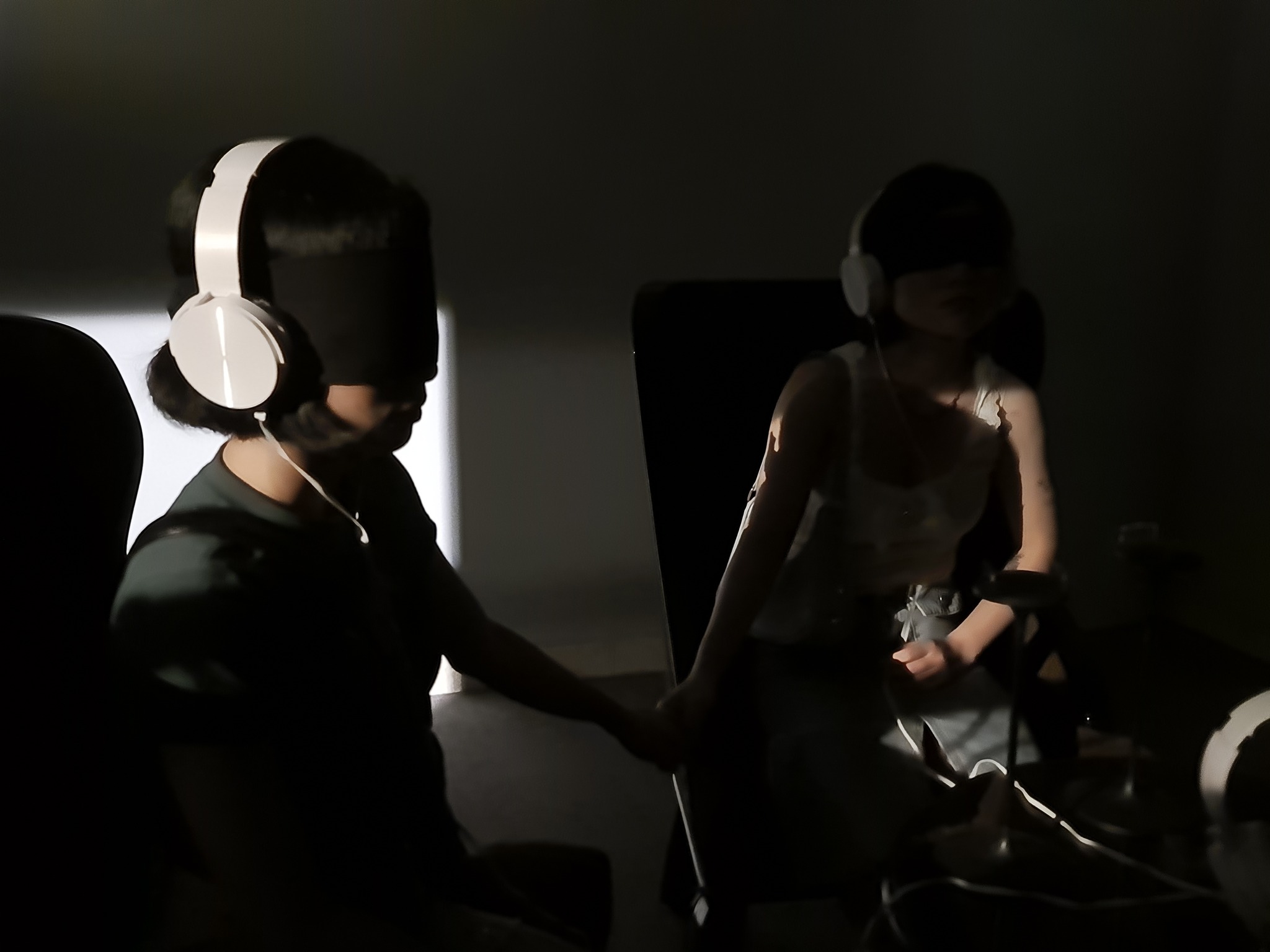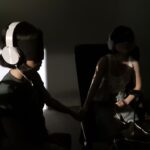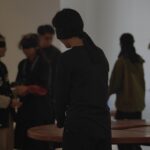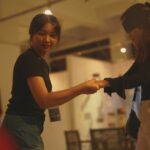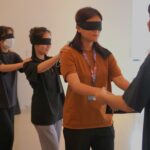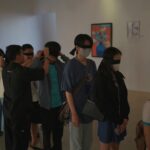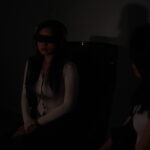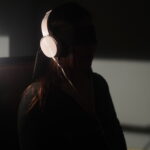Thực Exhibition by Chinbo Collective and Concept Tử Tế
An Immersive Journey Into Vietnam’s Contemporary Artistic Souls
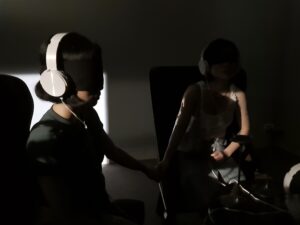

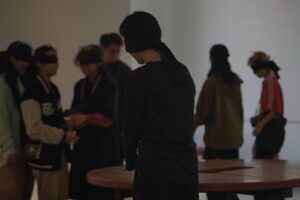
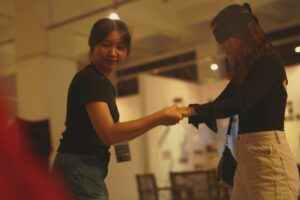
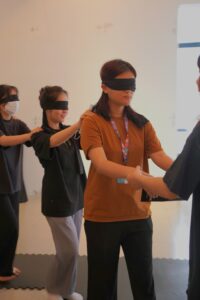
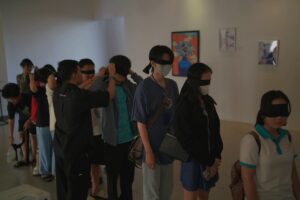



Visitors were prepared to have their senses captivated at the Thực Exhibition – a groundbreaking showcase of contemporary Vietnamese art that hit Ho Chi Minh City this past October. Hosted by Chinbo Collective in partnership with the renowned creative agency Concept Tử Tế , this transcendent multimedia art exhibition invited guests to explore the depths of emerging local talent from Oct 18-23, 2023, at 218A Pasteur, District 3.
The Thực Exhibition stood as a powerful confluence of introspective artistic expression from 10 of Vietnam’s brightest young visionaries: Mắm, Muối, Phương Phạm, Nguyễn Khôi, Chin, Thạch Thế Ngọc, Thanh Kha, Nguyễn Đăng Khoa, Brandy, and Maxys.hoang. Featuring an eclectic array of paintings, graphics, installations, and video art, their works took visitors on a profound exploration of identity, self-perception, and the human condition.
Visitors immersed themselves in pieces that provoked philosophical inquiries central to our lived experiences. The exhibition posed thought-provoking questions: What constituted our existence as conscious beings? How did we perceive reality – were we shaped by external inputs, or did innate notions guide our understanding? Celebrating the perpetual fluidity of human perspectives and artistic interpretation, Thực highlighted a brilliant spectrum of perspectives and visceral reactions arising from Vietnam’s revolutionary new generation of visual storytellers.
As the Vietnamese contemporary art movement garnered thunderous global acclaim for its masterful interweaving of rich cultural heritage with powerful modern narratives, the Thực Exhibition embodied this transcendent synthesis. The featured artists engaged in profound dialogue with personal and collective histories, memories, and socio-cultural contexts, translating their unique lenses into immersive visual poetry that sparked reflection and forged human connections.
More than passive displays, Thực invited visitors to be active participants in an all-consuming multi-sensory experience that awakened their deepest introspections. From the moment they entered, the exhibition surrounded them in a universe of mixed media expressions that stimulated sight, sound, spatial dimensions, and emotive energies. Visitors braced themselves to confront existential themes while bearing witness to the meteoric rise of Vietnam’s boundary-defying artistic voices.
This transformative celebration of audacious creative human expression was not to be missed. Those who secured their passes to Thực were prepared to be forever changed.
A Journey of Perception
“THẤY” – THE DARK ROOM

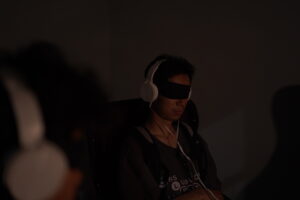




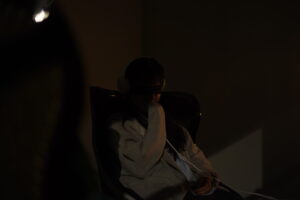

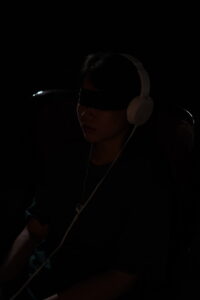
Introduction: The artwork “THẤY” invites us to step into the shoes of someone who has lost their sight. It exists within the context of the “Thực” exhibition, a collaboration between Chinbo Collective and the Ho Chi Minh City Fine Arts Association. Concept Tử Tế, the creative force behind “THẤY,” masterfully weaves together sensory elements to convey a profound message.
- The Absence of Light:
- Imagine being blindfolded before entering the room. Darkness envelops you, and your visual perception is extinguished.
- In this void, your other senses awaken. The silence becomes palpable, and you become acutely aware of your breath—the rhythm of life itself.
- Ears as Guides:
- Without sight, your ears take center stage. They become your guides, painting a vivid picture of the world around you.
- The rustle of fabric, distant footsteps, and the gentle hum of existence—all these sounds converge into a symphony of awareness.
- Resilience and Adaptation:
- As you stand there, blindfolded, resilience sprouts within you. It’s the same resilience that allows individuals with visual impairments to navigate life’s challenges.
- The darkness becomes a canvas for courage. You realize that even in adversity, hope persists.
- The True Rays of Light:
- Suddenly, you perceive something beyond the absence of light. It’s not physical illumination; it’s the illumination of the soul.
- These are the true rays of light—the ones that emerge from within. They defy darkness, doubt, and despair.
- Life Stages Through Sound:
- The “sound” within the room mirrors the life cycle of a visually impaired person:
- Hope: The prenatal stage—the promise of existence.
- See: The birth stage—a moment of arrival.
- Steps: The school-going stage—learning and growth.
- Live: The adulthood stage—navigating the world.
- Hope (Again): The stage of passing away—a transition into the unknown.
- The “sound” within the room mirrors the life cycle of a visually impaired person:
Participating in “THẤY”:
- Blindfolded Entry:
- Before stepping into the room, your eyes are covered. Darkness envelops you completely.
- The blindfold symbolizes both vulnerability and anticipation.
- Guidance and Choice:
- An attendant leads you into the room. You feel their presence—a lifeline in the darkness.
- Choose your spot—a decision laden with significance. Where will you stand? What perspective will you adopt?
- The Resonance of Sound:
- As everyone settles, the “sound” begins. It’s not just auditory; it’s emotional, spiritual.
- Each note carries a memory, a stage of life. You listen, absorb, and connect.
- Emerging from Darkness:
- When the experience ends, you remove the blindfold. Light floods back in, but it’s different now.
- You’ve glimpsed the inner light—the one that persists even when external circumstances dim.
Takeaway:
“THẤY” transcends mere art; it’s an invitation to empathy. It reminds us that even in our darkest moments, hope remains. Whether we face physical or metaphorical blindness, there’s always a glimmer—a way to perceive the world anew.
So, if one day you lose your sight, remember this: You’ll still find something to “see.” It won’t be with your eyes, but with the depths of your being.
Note: The Vietnamese word “THẤY” means “see” or “perceive.” In this context, it encompasses far more than visual perception.



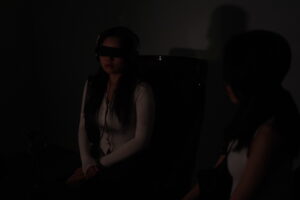
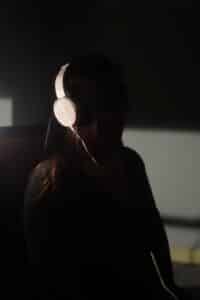
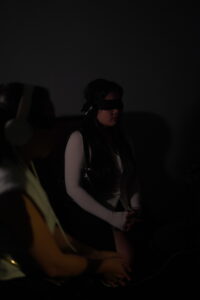


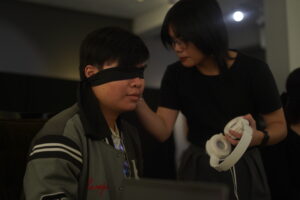
The Story of Ban Mai
Chapter 1: Dawn of Hope (Hy Vọng)
In a small village nestled among rolling hills, Ban Mai’s parents eagerly await her arrival. Their modest home is filled with anticipation—the scent of jasmine incense, the soft rustle of bamboo curtains, and the warmth of a single candle. They name their unborn child Ban Mai, which means “Morning Light.” Their hope is palpable, like the first rays of dawn breaking through the mist. They imagine her laughter, her tiny fingers reaching for the sun, and the promise of a future brighter than any sunrise.
But when Ban Mai enters the world, her eyes remain closed. The midwife’s gentle touch confirms what her parents feared: their daughter is visually impaired. Yet, in that moment, they make a silent pact—to be her eyes, to guide her toward the light they believe she carries within.
Đôi khi, những đám mây tối sẽ tạo nên bức tranh đẹp nhất.
– Ban Mai.
Chapter 2: The Unseen World (Thấy)
Ban Mai’s childhood is a symphony of sensations. She feels the rough bark of the mango tree in their courtyard, listens to the melodic calls of birds, and memorizes the layout of their home—the creaky wooden steps, the coolness of the stone floor, and the warmth of her mother’s embrace. Her parents describe colors to her—the azure sky, the emerald rice fields, and the crimson sunset—but she can only imagine them.
Outside, children play tag, their laughter echoing through the village. Ban Mai joins them, her heart racing as she navigates by sound and touch. She learns to recognize footsteps—the light tread of her best friend, Linh, and the heavy gait of Old Mrs. Nguyen, who always smells of ginger tea. Ban Mai’s world is one of textures and whispers, where shadows dance on the walls, and dreams are painted in shades of hope.
Hãy chấp nhận bản thân mình với tất cả ưu điểm và khuyết điểm.
– Ban Mai.
Chapter 3: Stepping into the Light (Bước đi)
School becomes Ban Mai’s sanctuary. Her parents insist she attend, despite the doubts of neighbors. They wrap her in a traditional áo dài, and with her cane tapping the ground, she steps into the classroom. The teacher, Miss Huong, becomes her ally. She reads aloud textbooks, describes diagrams, and encourages Ban Mai’s insatiable curiosity. Ban Mai’s fingers trace raised letters—the alphabet, the names of flowers, and the word “friendship.”
Linh, her faithful companion, becomes her eyes. She whispers secrets about the world—the blush of a rose, the coolness of a stream, and the way sunlight filters through leaves. Together, they explore the village—the fragrant herb garden, the bustling market, and the temple where incense spirals toward the heavens. Ban Mai’s laughter mingles with the wind, and she believes that even in darkness, there is light.
Cứ sợ hãi, nhưng hãy làm việc bạn muốn dù cho thế nào đi chăng nữa!
– Ban Mai.
Chapter 4: Embracing Life (Sống)
As Ban Mai grows, so does her determination. She studies diligently, her fingertips tracing mathematical equations and historical timelines. She dreams of becoming a teacher, of inspiring other children like herself. But life isn’t without challenges. She stumbles over roots during monsoon rains, and sometimes, loneliness settles like dew on her skin. Yet, she persists.
When her parents fall ill, Ban Mai becomes their caregiver. She cooks simple meals, reads them poetry, and describes the changing seasons—the cherry blossoms of spring, the monsoons of summer, and the golden leaves of autumn. Their love sustains her, and she realizes that sight isn’t confined to eyes; it resides in the heart.
Bạn có thể không đến được nơi định đi nhưng chắc chắn bạn sẽ đến được
– Ban Mai.
nơi cần đến.
Chapter 5: Eternal Hope (Hy Vọng)
Ban Mai’s hair grays, but her spirit remains unwavering. She sits by the window, listening to Linh’s grandchildren play in the courtyard. Her parents have long departed, but their voices echo in her memories. She writes letters to them, sealing them with invisible kisses. And when her time comes, she smiles, knowing that her story—the story of Ban Mai—will continue.
In the village, children gather around her grave, sharing tales of the blind woman who saw the world differently. They plant jasmine bushes, and as the flowers bloom, they whisper, “Morning Light.” Ban Mai’s legacy lives on—a testament to hope, resilience, and the beauty that exists beyond sight.
Hạnh phúc thực sự không phải là điểm đến, mà là hành trình bạn trải qua.
– Ban Mai.
And so, the story of Ban Mai unfolds—a tapestry woven with threads of courage, friendship, and the indomitable human spirit.
Nếu bạn có một ước mơ, hãy tin rằng bạn có khả năng để thực hiện nó.
– Concept Tử Tế.

